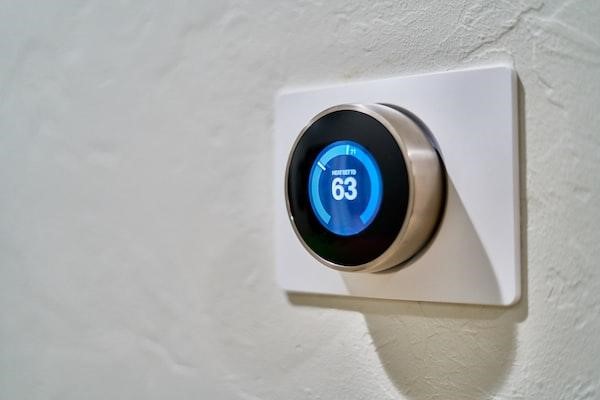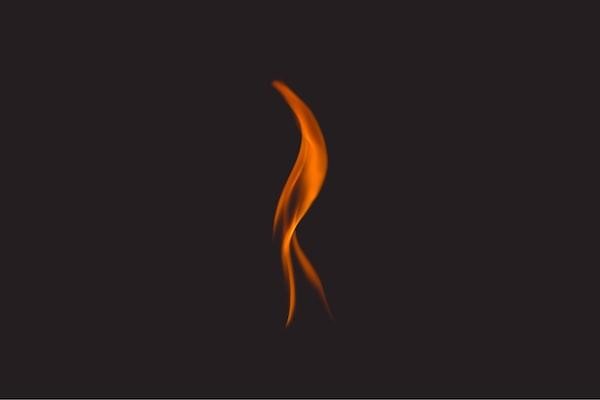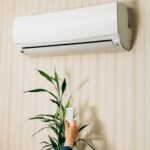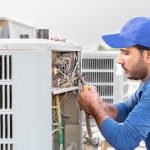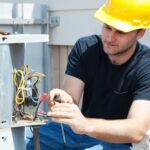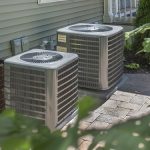Are you having trouble with your heating system blowing cold air instead of hot? If so, you are not alone! Troubleshooting a heating unit that is blowing cold air can be frustrating, but by understanding the common causes and knowing the steps to take to fix the issue, you can get your heating unit running again in no time. Keep reading to learn tips for troubleshooting a heating unit blowing cold air. Of course, the best solution we would suggest is to get a professional HVAC service company out to check it and see what they can do to fix it.
Thermostat Issues
If your heating unit is blowing cold air, the most common culprit is an issue with your home thermostat. The thermostat is the device responsible for controlling the temperature of the heating unit, and if it is not working properly, it can cause the heating unit to blow cold air. If the thermostat is not set correctly, it can cause the heating unit not to turn on or to turn off prematurely, causing the air to be cold. Additionally, if the thermostat is not calibrated correctly, it can cause the heating unit not to reach the desired temperature.
To troubleshoot a thermostat issue, it is important to check the thermostat settings to ensure they are correct. If the thermostat is not set to the desired temperature, it is important to adjust it accordingly. Additionally, it is important to check the thermostat’s batteries to ensure they are functioning properly. If the batteries are weak or dead, the thermostat may not be able to control the heating unit properly.
Dirty Air Filter
A dirty air filter is another common issue when troubleshooting a heating system blowing cold air. An air filter is responsible for trapping dust, pollen, and other particles from circulating through the heating system and into the air. When the filter becomes clogged, it restricts the flow of air, causing the heater to work harder and not be able to heat up the air to a comfortable level. It is important to check and clean or replace the filter regularly as it can become clogged quickly and start to impede the heating system. It is suggested that air filters be replaced at least every 90 days.
A clean air filter allows the air to flow freely through the heating system, thus providing a more consistent and comfortable temperature. Additionally, a clean air filter helps to prevent the buildup of dust and debris, which can reduce the system’s efficiency and lead to poor indoor air quality. By routinely checking and replacing your air filter, you can help ensure that your heating system is running efficiently and effectively.
Pilot Light Issues
A pilot light is a small flame that is used to ignite the main burner in a heating unit. When the pilot light is extinguished or does not light, the main burner will not ignite, and the unit will blow cold air. Troubleshooting a heating unit with pilot light issues requires checking the pilot light first. This can be done by locating the pilot light on the unit and visually inspecting it. If the pilot light is out, it needs to be relit. This can be done by following the manufacturer’s instructions, as each unit is different.
If the pilot light is lit, but the main burner will not ignite, the pilot light may be too weak and need to be adjusted. This can be done by adjusting the pilot light control valve located on the unit. Once the pilot light is adjusted, the main burner should ignite, and the unit should begin to produce warm air.
If the pilot light does not light or stay lit, it could be a sign of a clogged pilot orifice, a broken thermocouple, or a faulty gas valve. Each of these components can be inspected and repaired or replaced if needed. If you are not comfortable with adjusting the pilot light, it is important to contact a qualified HVAC technician, as improper procedures could be dangerous.
Dirty Flame Sensor
The flame sensor is a device in the heating unit that detects the presence of the pilot light. When the pilot light is lit, it sends a signal to the furnace, letting it know that the furnace should be able to produce heat. If the flame sensor is dirty, it can cause the furnace to blow cold air, as the sensor will not be able to detect the pilot light.
To troubleshoot a dirty flame sensor, the first step is to inspect the pilot light and make sure it is lit. Once the pilot light is lit, the flame sensor should be cleaned. This can be done with a small brush and some isopropyl alcohol. Once the flame sensor is clean, the furnace should be restarted to ensure the flame sensor is working properly. If the furnace is still blowing cold air, the flame sensor may need to be replaced.
Troubleshooting a heating unit that is blowing cold air is important to ensure the safety and efficiency of the system. If you cannot determine the cause of the problem, it is important to contact an HVAC technician to help get your heater working again.
